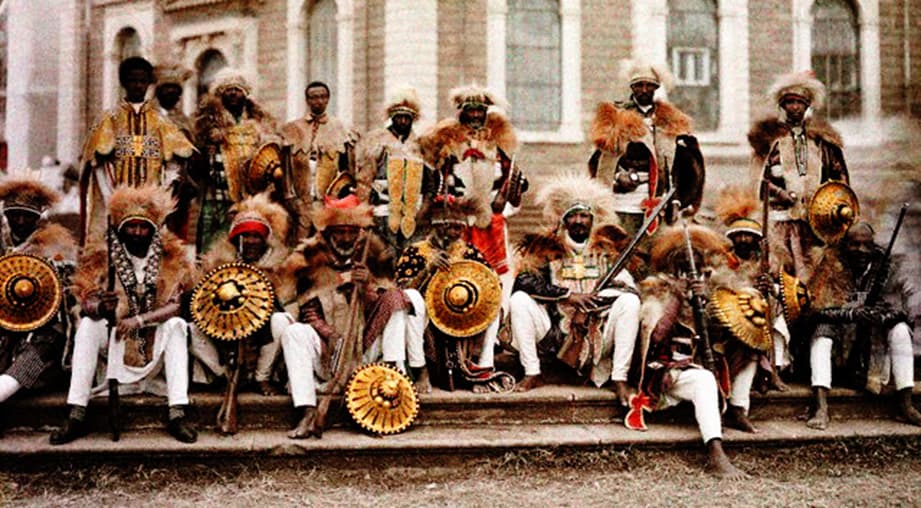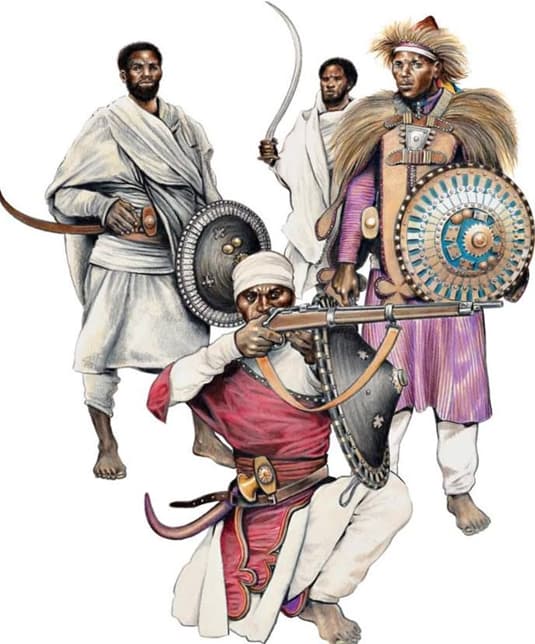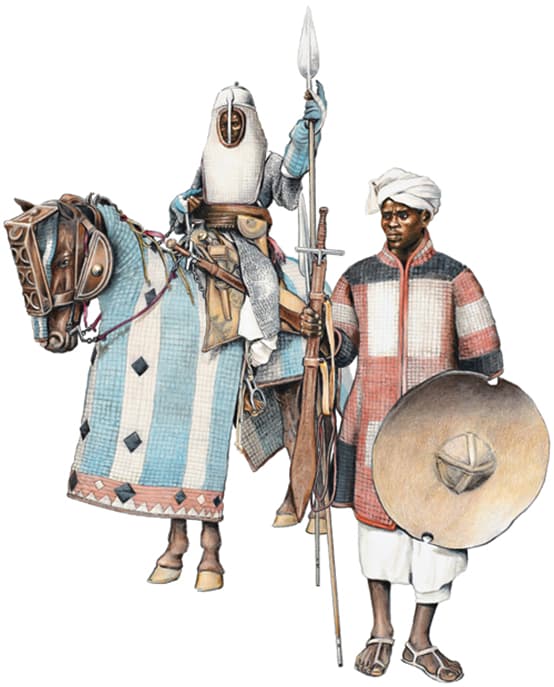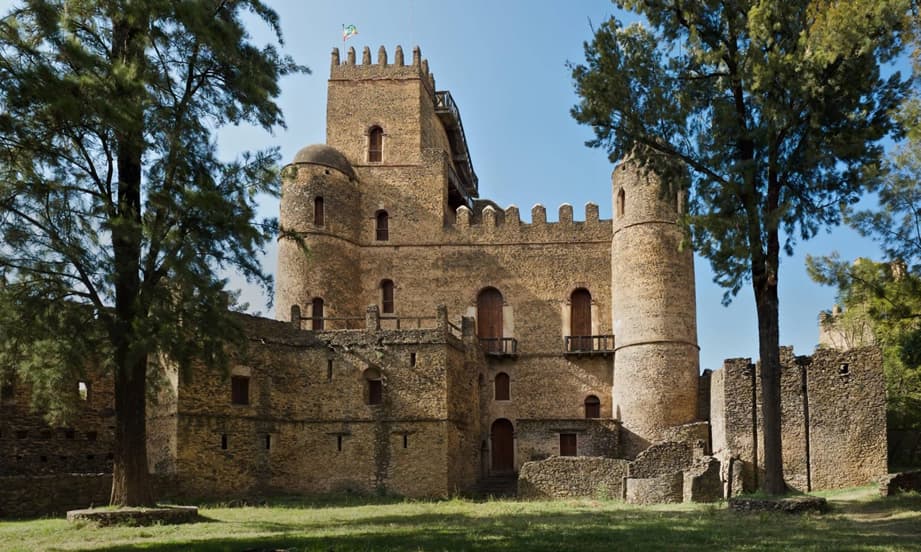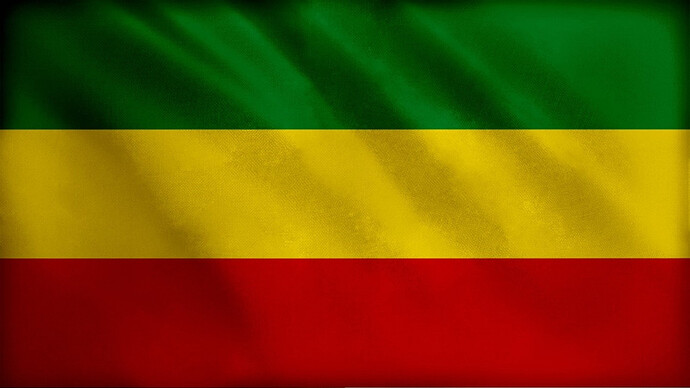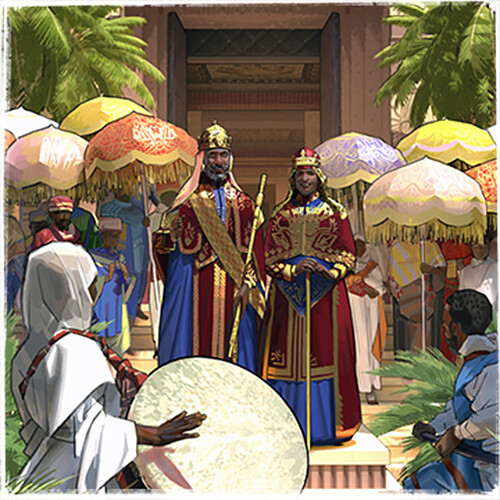THE EMPIRE OF ABISINIA
I chose to use the name of Abisina instead of Ethiopian Empire because we can call Ethiopian Civs the two variants presented on this posts and also to make a distinction between this and the more modern Ethiopia.
ZAGWE DINASTY
This was a medieval Agaw descendant monarchy that ruled the northern parts of Ethiopia and Eritrea. This dinasty is famous for being a Christian African kingdom and the presence of historical characters like king Gebre Meskel Lalibela, who is credited with having ordered the construction of the rock-hewn monolithic churches of Lalibela.
Ethiopia developed its own variant of Christianity, the Ethiopian Orthodox Church, and they even claim to have had the Ark of the Covenant in their possession since ancient times. It is even believed that this was the mythical kingdom of Prester John (I recommend you read about it, because it is something very interesting, but a bit long to explain here).
The Zagwe ruled their kingdom from 1137 to 1270, when Yekuno Amlak defeated and killed the last emperor Zagwe in battle. The name Zagwe is believed to come from the Ge’ez phrase Ze-Agaw, meaning “of Agaw” and referring to the people of the Agaw tribe.
SALOMONIC ERA
The new king “Yekuno Amlak” declares himself a descendant of ancient Aksumite dynasty, which according to legend had their origin in the union between King Solomon and the Queen of Sheba, from which Menelik I was born. For this reason, this dynasty was named the Solomonic Dynasty.
It is believed that it was during this period that the Kebra Nagast (Book of the Glory of the Kings of Ethiopia, c. 1300) was written. From this point on, the Monarchs would attempt to ensure national unity based on the Christian religion and their authority by divine right.
CHEWA
A class of professional soldiers also known for traditional warriorhood practices and a rich cultural background. Created by the crown as personal warriors of the emperor, but eventually becomes the backbone of the army. Their barracks served as safe sites around which they built urban centers of various sizes, reaching approximately 66 villages in Eritrea with a Chewa, from this last place they took their name.
GAMEPLAY
Some units have a name of their own but remain the same as those of other civilizations for mechanical purposes: The monk is called Abuna, the archer ship is called Sewn boat, Springal ship are the Liburnian.

CIV BONUSES
-Relics carried by a monks or inside of a monastery increases nearby units damage in 3.
-Farms built around a market become coffee plantations, produces 50% less food but produces gold. Also, the market can receive food and gold.
-Farm upgrades free.
-Acces to Mounted Guns tech for the lack of Warship variant.
CIV MECHANIC
Subsistence Trading: Markets generate +0.5% more gold from traders per building in their aura, this aura increases the size like House Of Wisdom but don stack, with more markets (every market can have its own aura).
UNIQUE UNITS
Shotelai: Replaces the man-at-arms, faster in movement and ignore 50% of enemy armor. The shotel is a curved, hook-shaped sword that can bypass shields when striking or be used to deflect them.
Tarasmba At Mesewa: Replaces the knight, its charge bonus ignore armor. This was regiments of heavy cavalry which received their name according to their settlement of origin, so each regiment had its own name.
Javelin Thrower: Shared with the Malians. Replaces the crosbowmen and deals extra damage against archers.
Nubian Archer: Archer variant only available choosing the Axumite obelisk to reach age 2. Have a special attack (just another arow) that deals x2.5 of damage but have cooldown.
UNIQUE BUILDINGS
Monolithic Church: Replaces the monastery building, requires stone but have more hit points, armor and provides stone per minute per garrisoned relic.

UNIQUE TECHNOLOGIES
-State Provisions (Blacksmith age II): Melee and ranged infantry gains +1/+1 armor.
-Chewa (Blacksmith age III): Spearmen, Shotelai, Tarasmba and Archers gains +15 of HP and +2 of damage.
-Solomonic Restauration (Monolithic Church age III): Monolithic Church’s works 20% faster and monks become 20% cheaper.
-Zema Liturgical Chant (Monolithic Church age III): Abuna boost units when are healing it.
-Militar Governor (Stable age III): Heavy cavalry have an aura that increases nearby units attack speed on 30% when this kills a unit.
-European Importations (Archery Range age IV): Increases hand cannoneer damage in 5. A reference to how Portugal helped Abyssinia defend itself from an invasion by the Sultanate of Adel and how it helped it modernize its weapons with arquebuses.
-Amba (Fortress age IV): Fortress gain more range in their attacks and can garrison 5 more units. Amba it’s a word that can be used to refers a natural mountain formation useful to defensive purposes or a mountain fortification.
UNIQUE LANDMARKS
To Age II
Axumite Obelisk: Increase the movement speed of nearby caravans, produce one caravan every minute that can be purchased free as a caravan, villager or Nubian Archer.
Biete Lehem: Acts as a mill but have double area of influence for farms. Farms under the area of influence slowly generates an additional tickle of food (independent of the food produced by the farmer).
To Age III
Debre Liban: Acts as a monastery but can receive 2 additional relics and train a Patriarch Abuna (Leader of Orthodox Ethiopian Church). The Patriarch Abuna have a healing aura, and nearby monks heals faster.
Debre Damo: Reduces the cost of all technologies in 20%. Acts as a monastery but can shoot arrows as a fortification.
To Age IV
Royal Tent: Nomadic building can be displaced and moved around the map. Have an aura that increase the production of nearby villagers 10% and all nearby units gains a +2 of damage. Before the building of the Fasilides castle the royal court did not have an established capital, but was itinerant and moved throughout the entire kingdom.
Fasilides Castle: Acts as a fortress and can train groups of Spearmen, Shotelai, Tarasmba and Archers by a reduction cost of 15% in the total and twice faster. It’s a post 1,600 structure, but it the most famous castle of the region an one of the most emblematic buildings of the empire.
WONDER
This is the most probably wonder, but I let a landmark effect because I think is a good contender to a landmark.
The Church of Mary of Zion: Acts as a monastery but the monks can take relics until the age III. Inside have the Arch Of Covenant that acts as a relic that cannot be outside of the Church, produces 10% more per age (maximum of 40%) and don’t accept other relics.

PROS
-Stong against heavy armored armies.
-Can generates extra gold with some farms.
-Upgrades than allow a variety of army compositions.
-Religious units have great potential.
CONS
-The focus on trade depends on map control.
-Nothing special on water.
FLAG
Prior 1,870 the Ethiopian Empire heraldry already had the 3 colors that have come today, but in 3 pennants and not in a single flag. I really don’t see AoE IV modifying the shape of the flags to adjust to those historically used by civilizations. Therefore, I think it ends up being a mere tricolor rectangular flag.
THE SIMIEN (CIV VARIANT)
Simien, sometimes referred to as the Kingdom of Beta Israel, was a pseudo-legendary nation inside Ethiopia. It was a territory mainly inhabited by people of Cushite ethnic groups such as the Agaw and was apparently established in opposition to the conversion to Christianity by the kingdom of Aksum. It is not clear how this kingdom ended or when it transitioned into the Zagwe dynasty, but it must have lasted at least a few generations, during which it saw transformations such as the migration of more Cushite ethnic groups such as the Sidama.
Maybe this was a kingdom of short duration and not entirely confirmed by the historians, but I think have more justification to have its own variant than the Legacy of Zhu Xi (A wat if civ) or the Sultan Army (They may have been named as Ayyubids but comparing them with the campaign they clearly are not).
QUEEN GUDIT
Gudit was a semi-legendary, non-Christian Beta Israel queen who brought to an end the kingdom of Axum and its environs around 960 and attempted to exterminate members of the Axumite royal family. Her descendants would go on to form the Zagwe dynasty. There is no single version of her biography, since the sources in which she appears do not seem to have any direct connection with each other, and the fact that they are written in more than one language can lead us to assume that the perception of her depended on who you ask. The only thing we know is the fact of she was Jewish and represent Jews medieval cultural groups of Ethiopia.
There are two versions of the tradition about Gudit (According to Wikipedia):
-She was a princess of Gideon IV, the King of the Jewish Kingdom of Beta Israel (Kingdom of Simien). After her father was killed in battle with the Aksumite Empire, Gudit inherited his throne. Eventually, she defeated the Aksumite.
-She was a banished princess of Aksum who married Zenobis, a Syrian prince, and converted to Judaism. Eventually, she conquered Aksum with her husband and people of Hahayle, her mother’s homeland.
The tradition portraits her as a violent leader. One of her most recorded actions was she sacked and burned Debre Damo, an amba which at the time was a treasury and a prison for the male relatives of the king. This makes me think she probably was part of one wing of the Aksumite Royal Family that rose up in rebellion, perhaps due to ambition, ideological or religious differences. Then this faction founded Simien as its own kingdom and Dinasty under the regent of Gudit. Despite her image of destructibility, she is also remembered for having built several monasteries in the mountains of Ethiopia, so it may be that she only has this bad image for having replaced the old kingdom with a new one.
GAMEPLAY
As a Beta-Israel kingdom this time the monk must be called Kahen o Kes and the monastery becomes the Masguid or the Masgid becomes its own special building.
The problem with this civilization is that it predates the arrival of gunpowder in this part of the world, so either you can try to make a wat if about this civilization surviving beyond 1400 or focus on it being a civilization without gunpowder.
Doesn’t have the lancer, so the civ depends on improving the horsemen as much as the player can.
CIV BONUSES
-Farm upgrades free.
-Infantry 3% cheaper per age.
CIV MECHANIC
Subsistence Trading: Markets generate +0.5% more gold from traders per building in their aura, this aura increases the size like House Of Wisdom but don stack, with more markets.
UNIQUE UNITS
Shotelai: Replaces the man-at-arms, faster in movement and ignore 50% of enemy armor.
Javelin Thrower: Shared with the Malians. Replaces the crosbowmen and deals extra damage against archers.
Agaw Archer: Cheaper than normal archer, also deals less damage, but shoots faster and from a little bit more distance.
Sidama Spearmen: Spearmen with more movement speed, is cheaper than normal spearmen but also have less armor.
Nubian Archer: Archer variant only available choosing the Axumite obelisk to reach age 2. Have a special attack (just another arow) that deals x2.5 of damage but have cooldown.
UNIQUE BUILDINGS
Masgid: Replaces the monstery building and provides 20 of population.
UNIQUE TECHNOLOGIES
-Sidama Migrations (Town Center age I): Villagers and sidama spearmen can be trained on pairs.
-State Provisions (Blacksmith age II): Melee and ranged infantry gains +1/+1 armor.
-Mounted Kushite (Stable age II): Horsemen gains a shotel than allows it to ignore 50% of enemy armor and gains +1 damage.
-Queen Riders (Stable age III): Horsemen gains 30 of HP and deals twice damage against villagers.
-Aksum On Fire (Barracks age III): Shotelai +3 of damage and deals 50% more damage against buildings.
-Beta Israel Migration (Masguid age III): Every new Masguid spawns 4 villagers and the actual Masguids create 4 villagers.
PROS
-Cheap units are cheaper and easier to mass.
-Good raiding enemy bases.
-Villager population can be raised quickly.
CONS
-Weaker basic units.
-Lack of options against armored units despite the shotelai.
-Lack of artillery.
-The focus on trade depends on map control.
-Nothing special on water.
FLAG
I don’t think there is a flag or official insignia whose knowledge has survived to this day, so I based it on the flag of a mod of a paradox game and an emblem I saw in CK3 (probably fan made too).
I will most likely remake some of my old posts, but for now I want to do some about Africa.



